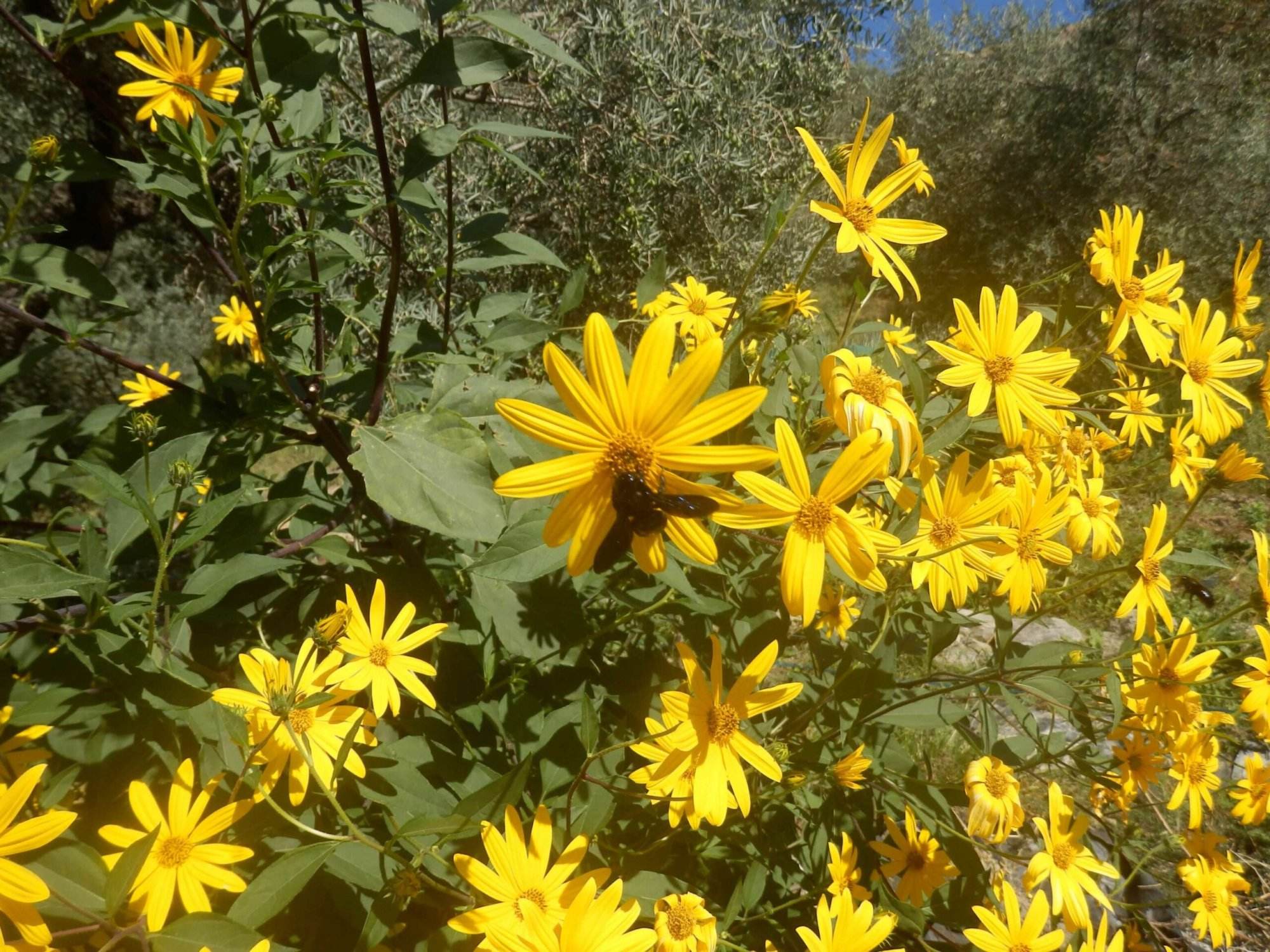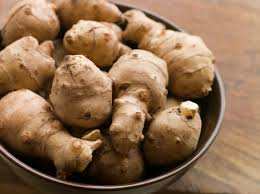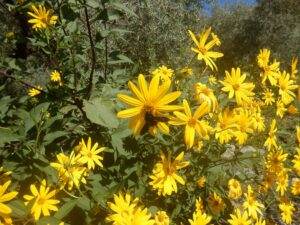

Jerusalem Artichokes: I think they’re delicious, nutty, sweet and a hint of earthiness. Not everyones favourite due to their, err, windy qualities. For some people this can mean they never seem to get into this tasty vegetable. For anyone with a sense of humour I’d say go for it they are an interesting winter flavour that grow well in the UK. Parp!

The flowers look great and are loved by insects. Plus once you’ve grown them once you’ll never get rid of them – this can be both a good and bad thing. Good if you want a harvest every year. Bad if they start to take over your garden/allotment. Only the slightest piece of Artichoke tuber left behind will re-grow. If you’re growing your own make sure to put them in a part of your garden or allotment where you don’t mind them reappearing year after year or in a large pot or other container where they can kept under control.

It’s quite a well used factoid that the name has nothing to do with Jerusalem, nor is the plant related to artichokes. The most common story goes that Jerusalem is a corruption of the Italian ‘Girasole’ – meaning sunflower, to which they are related. The artichoke part came from the fact that they taste a bit like globe artichokes.
Whilst they don’t agree with everyone, I think this way of eating them is really delicious and reasonably unusual. But also easy to do.Ingredients in bold.

Jerusalem Artichoke Pesto with Spaghetti
I learned to make this in Andalucia, southern Spain, where we did our cooking in cast iron pots on special solar oven which look like satellite dishes. Unsurprisingly those don’t work in Sheffield, but in order to remain faithful to that experience I use a cast iron pot on the stovetop. A lidded casserole type thing in the oven would probably work too, as would a regular saucepan – I think a lid is important.
Chop an onion – two if they’re small and fry gently in some olive oil – at this stage one tablespoon of oil is fine. Whilst these cook away gently wash and scrub the jerusalem artichokes – a large handful per person is fine and no need to peel unless the skin seems really tough. Put as many as you like in the pan with lots more olive oil. I probably used about 5-6 tablespoons. This might seem like a lot but this is essentially a pesto – olive oil is kind of the point.
Also to this I always add about 3-4 garlic cloves per person. These are non negotiable I’d say – the garlic-olive oil-artichoke combination is what makes the dish. Definitely don’t peel these. You want them to roast in their skins and become, sweet, gooey and soft. The skins will get dealt with later. Keep the heat low.
To this I sometimes add some finely diced carrot. Usually just to add a bit more veg but also the sweetness works well with the sweet garlic and nutty artichokes. Add as much as you like – how big is a carrot after all.
Now comes the bit where you need to pay a bit of attention. Everything should be sizzling away gently in the large amount of olive oil, I usually salt generously here, make sure the heat is down to low and get the lid on. What you want is for the things in the pot to caramelize and collapse together a bit. Sticky, chewy crusty bits forming is also very much desired – this is where the flavour is! But keep an eye on things – you don’t want anything to burn here. Probably cook this for about half an hour. After about 15 minutes I usually throw in about 4 whole slices of lemon – add more if you love lemon. Again these should disappear into the sauce. Maybe for the last 5 minutes I turn the heat up and take the lid off to aid that important caramelization.
Once it’s all well cooked; plenty of sticky tasty bits, some parts of the veg collapsed and soft, I turn the heat off and carefully scrape it all out into a food processor or pestle and mortar. Wazz in the processor or pound away. Here the garlic will be mushed up and the skins can be retrieved. The lemon rind will be fully obliterated in the sauce and everything brought together to make a delicious pesto. I sometimes keep a quarter of the mix back from this stage and stir it through later for texture. Now I also add a generous couple of tablespoons of yeast flakes for extra savouriness – look them up, they’re available at health food shops and places like that. These aren’t essential at all I just like them. You could grate in some Parmesan as well or leave both out. Up to you it’ll still be delicious.
Then the whole lot is stirred through some well cooked good quality dried spaghetti – or other pasta though spaghetti feels right. Add more salt if needed and plenty of black pepper – possibly more olive oil if you are really feeling greedy. Chopped parsley is good as a fresh element as is a squeeze of lemon though again up to you.
Eat.
You may need a lie down afterwards.







